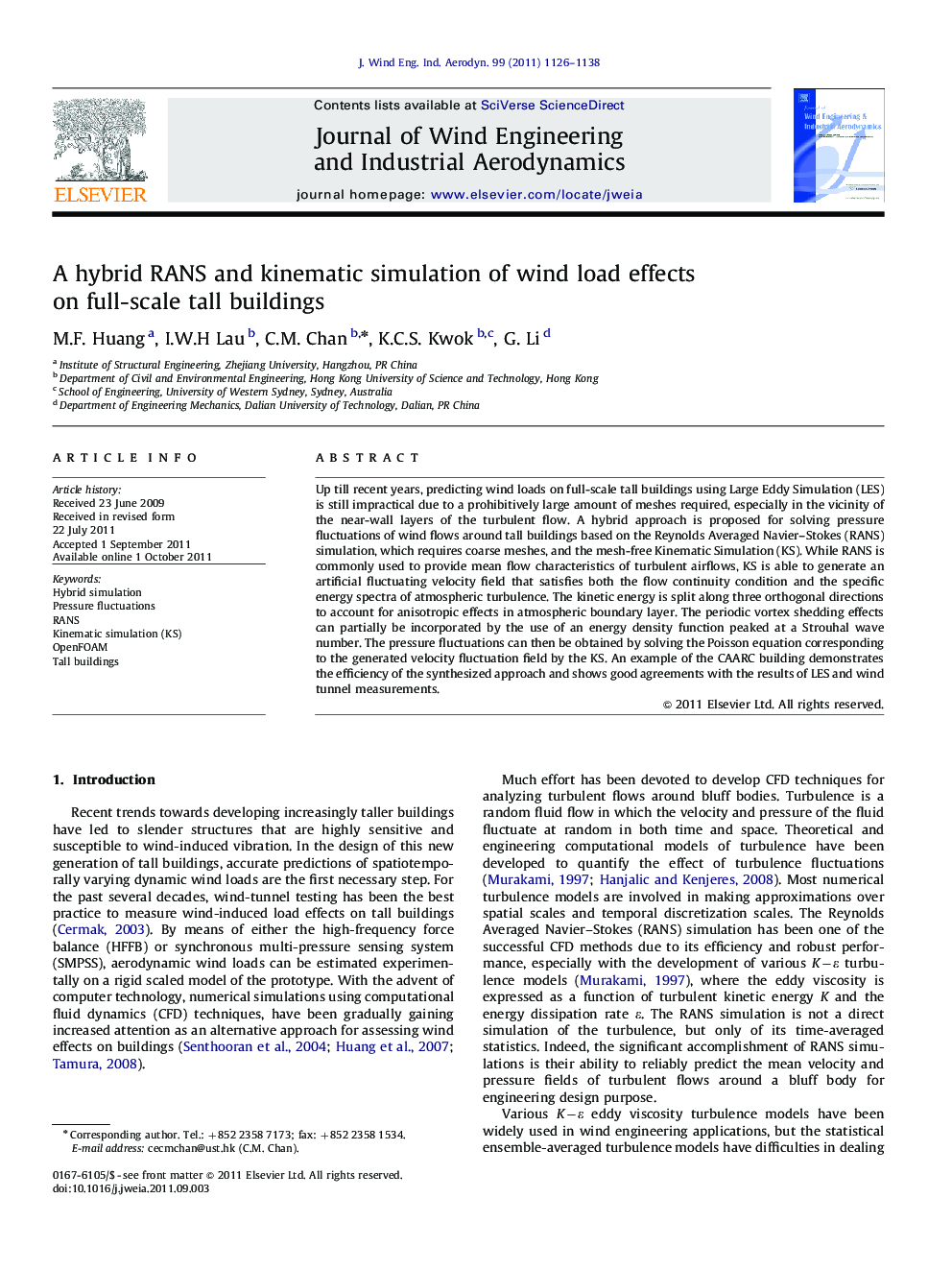| Article ID | Journal | Published Year | Pages | File Type |
|---|---|---|---|---|
| 292553 | Journal of Wind Engineering and Industrial Aerodynamics | 2011 | 13 Pages |
Up till recent years, predicting wind loads on full-scale tall buildings using Large Eddy Simulation (LES) is still impractical due to a prohibitively large amount of meshes required, especially in the vicinity of the near-wall layers of the turbulent flow. A hybrid approach is proposed for solving pressure fluctuations of wind flows around tall buildings based on the Reynolds Averaged Navier–Stokes (RANS) simulation, which requires coarse meshes, and the mesh-free Kinematic Simulation (KS). While RANS is commonly used to provide mean flow characteristics of turbulent airflows, KS is able to generate an artificial fluctuating velocity field that satisfies both the flow continuity condition and the specific energy spectra of atmospheric turbulence. The kinetic energy is split along three orthogonal directions to account for anisotropic effects in atmospheric boundary layer. The periodic vortex shedding effects can partially be incorporated by the use of an energy density function peaked at a Strouhal wave number. The pressure fluctuations can then be obtained by solving the Poisson equation corresponding to the generated velocity fluctuation field by the KS. An example of the CAARC building demonstrates the efficiency of the synthesized approach and shows good agreements with the results of LES and wind tunnel measurements.
► New hybrid approach combines RANS simulation and kinematic simulation (KS). ► Generated velocity field satisfies continuity and matches atmospheric energy spectra. ► Anisotropic and vortex shedding effects can be accounted in full scale simulation. ► Proposed approach shows comparable results with LES and wind tunnel measurements. ► Computational cost is reduced due to coarser mesh required by RANS and mesh-free KS.
